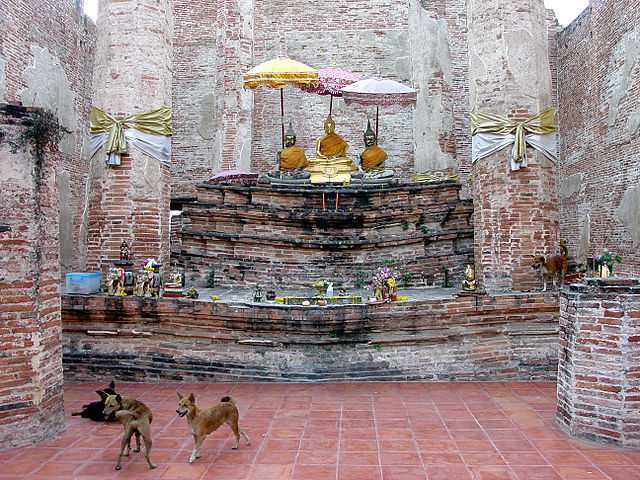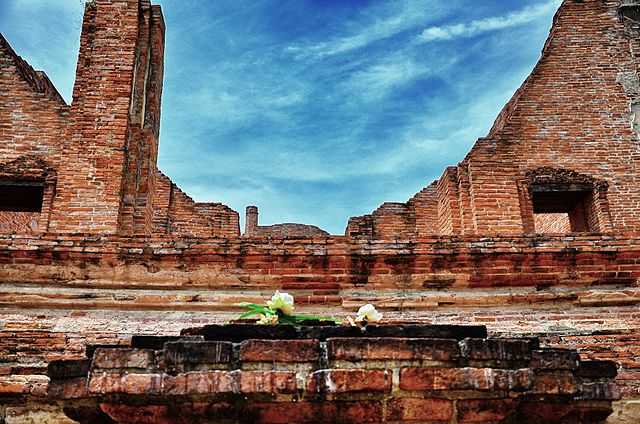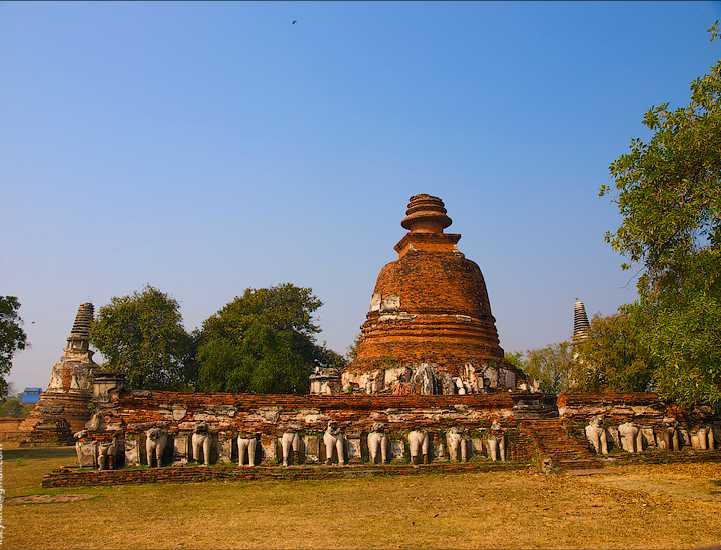Wat Maheyong
₹ 255 onwards
View Ayutthaya PackagesWeather :
Tags : Buddhist Temple
Timings : 8:00 AM - 5:00 PM
Time Required : 1-2 hrs
Entry Fee : THB 50
Wat Maheyong, Ayutthaya Overview
Wat Maheyong is a Buddhist monastery located just outside and on the Eastern end of the ancient city of Ayutthaya. The monastery lies in ruins although it had been restored several times in history. Believed to have been constructed as a meditation center in the 15th century, the red brick walls remain visible from afar. It has been declared as a national historical site by the “Fine Arts Department” of Thailand with the Buddhist monks being encouraged to preside over religious ceremonies held at the ordination hall (ubosot) during auspicious periods.
An adjoining monastery that specializes in vipasana, a type of meditation technique, overlooks the services and organizes a 9-day long workshop for meditation every month on the ruined site. There are a number of ponds and forested pavilions on the other side of the lanes leading to Wat Maheyong. Visitors find it peaceful and rejuvenating to stroll through the verdant land in order to reach the meditation hall.
Read More on Wat Maheyong
Architecture of Wat Maheyong

Source
The huge ruined area of Wat Maheyong is pleasantly shaded with trees and ponds making it pleasurable to roam about. However, the visitors are surprised to note paths in between the long-standing bare brick walls with the overhanging trees forming a canopy of sorts. A short stroll through the path leads them to the spacious hall where the walls remain intact but the roof has been demolished long ago. An enormous Buddha statue is observed in this area. Unfortunately, it is exposed to the element of nature at present. The monks from the nearby monastery are often seen chanting prayers and sitting in meditation in front of the idol.

Source
The tourists find a large bell-like chedi at the rear end of the Wat Maheyong that has remained more or less intact despite being built out of bricks. The lofty spiral, however, has fallen down but remains visible with the brick layered base sticking out from amongst the ruins. There are multiple white plastered statues of elephants seen to be guarding the base albeit in a broken condition. The architecture is faintly reminiscent of that of the Sukhothai Kingdom. The minor chedis and parts of the walls as well as multiple stone plates shaped like leaves are found lying on the ground, making a pleasant seat for the visitors who grab a few moments of peace and quiet.
History of Wat Maheyong

The Buddhist shrine of Wat Maheyong is believed to have been constructed by Borommarachathirat II in 1438 with the name denoting it to be a “Monastery of the Mound.” The temple was destroyed by the elements of nature and was ruined almost completely when King Thai Sa decided to renovate it during his reign.
A Royal Palace was constructed adjacent to Wat Maheyong with the King preferring to spend a good part of his time at this residence in order to supervise the restoration at the temple. The monastery was remodeled and opened to the public after three years but managed to remain standing only for 6 decades afterwards before it was ransacked and demolished by the victorious Burmese Army in 1767 along with the rest of Ayutthaya.
Tips While Visiting Wat Maheyong
-
It is essential to carry drinking water in order to stay hydrated
-
Visitors are advised to use sun block creams and cover their heads by umbrellas or headgear to escape the UV rays
-
It is necessary to remove footwear while entering the meditation hall
-
Early morning hours happen to be the best time for looking through the ruined Wat Maheyong
-
The months of November - January are the most appropriate time to visit
How To Reach Wat Maheyong
The visitors can instantly recognize the historical site by the sign on its entrance. The backpackers and the locals prefer to bicycle to the Wat, however. It is also possible to catch a train from Hualamphong station in Bangkok to the rail station of Ayutthaya that happens to be nearby with tuk tuks being available for taking the visitors up to Wat Maheyong.
Top Hotel Collections
Top Hotels Near Wat Maheyong
Wat Maheyong Reviews

Have a Question on Wat Maheyong?

experience.